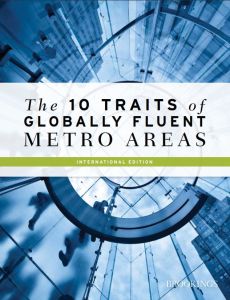Melden Sie sich bei getAbstract an, um die Zusammenfassung zu erhalten.

Melden Sie sich bei getAbstract an, um die Zusammenfassung zu erhalten.
Greg Clark and Tim Moonen
The 10 Traits of Globally Fluent Metro Areas
International Edition
Brookings Institution Press, 2013
Was ist drin?
Global Cities provides uncommon insights into what turns ordinary cities into economic hubs.
Recommendation
The Global Cities Initiative, a joint undertaking of the Brookings Institution and JPMorgan Chase, conducted a worldwide survey to understand what makes a city “globally fluent.” The authors used historical and geographical evidence plus the survey’s results to capture the 10 attributes that these successful metropolitan areas share. The report’s findings clearly show city officials, urban planners and business communities the factors that shape their municipality’s performance in global markets so they can implement the changes necessary to keep pace with complex international commerce. getAbstract recommends this perceptive study to city officials, planners and students of urban history who want to know how cities evolve, prosper or decline.
Summary
About the Authors
Greg Clark is a nonresident senior fellow at the Brookings Institution’s Metropolitan Policy Program. Tim Moonen is a postgraduate research student at the University of Bristol. This report is also “based on previous work by Brad McDearman, Greg Clark and Joseph Parilla.”

























Comment on this summary